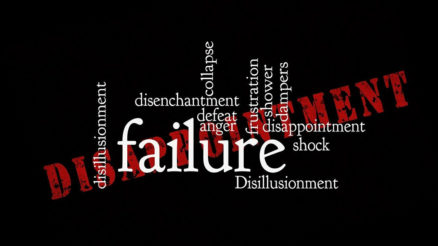What is McKinsey 7S Model?
The McKinsey 7S model was developed in 1980s by former employees of McKinsey which is a renowned management consulting firm. In this model, the 7S refers to the seven factors that start with the letter ‘S’ namely Strategy, Structure, System, Shared Values, Skills, Style and Staff. These factors determine how is organization designed and how does its different parts of organization work together.
These factors are further categorized into hard and soft elements.
Hard elements include Strategy, Structure and System which have direct and obvious influence in an organization.
Soft Elements include Shared Values, Skills, Style and Staff which work in a subtle way to influence organizational culture.
This model is primarily used for organizational assessment as it helps to track performance and progress of organizations. However, it is useful when organizations undertake change; so, it helps to formulate strategy, identify strength and gaps and what needs to be done to achieve the intended change. Let’s find out what exactly are the seven elements of McKinsey 7S model and what is its relevance for change management.
Strategy
Strategy is a plan of an organization to achieve its objective. A good strategy is guided by vision and mission of an organization and shows a clear path to operate and produce intended results. It also tells that what resources are required to operate and maximize productivity.
How strategy is important for change management: The first action towards change is to analyze existing strategy of an organization; whether it is relevant to new emerging situations, whether it answers questions raised on the future of an organization. This analysis also provides the basis of formulating new strategy which is required to implement change.
Structure
Structure is the organization chart and it presents organizational picture like who is doing what. It also tells about hierarchal layers of an organization; its departments and what are their functions.
How Structure is important for Change Management
An analysis of organizational structure guides that whether its team and departments are aligned with new strategy of change management. If decision making process and information sharing process within team fits with the desired change or not and what changes are required which suit to change strategy.
System
Systems are daily processes and procedures which help to carry out day to day activities in an organization. System has huge impact on how operations are done and how teams work on day to day basis to get the job done.
How System is important for Change Management
For any change to happen system are also assessed by asking questions like whether an effective and efficient systems are in place to achieve the intended goal. What are the financial cost of the system and what is the additional cost in order to improve the process and procedures?
Shared Values
These are core values or foundation of an organization. These present norms and culture of an organization which guide behaviors and actions of employees. It has influence on every element of organization from strategy to system to staff and style.
How Shared Values are important for Change Management
It is essential for change leaders to identify existing core values, norms and culture and what are influences of these values on vision of change and on day to day operations. Analyzing shared values also informs what are strongest values and what values have least impact on organization.
Skills
Skills are the abilities and capabilities of human resource of an organization. Employees’ skills determine performance of an organization and these play a key role in attaining competitive advantage and defining the organizational success.
How Skills are important for Change Management
During organizational change, one of most critical factors is what skill set employees of organization possess. Any change strategy is effective only if the employees have the required skills to implement change. An analysis of skills set will also define that what are the strongest skills which will work best for change and what new skills will be required by organization.
Style
Style refers to leadership and management style in an organization. It is about behavior and attitude of leadership and management. It tells how an organization is managed, how it leadership interact with employees, how decisions are made and how are these implemented.
How Style is important for Change Management
Style of leadership is crucial for change. It is essential for leadership to take everyone into confidence before embarking on journey of change. A good and effective style of management contribute to building a good team which is a prerequisite of organizational change.
Staff
The most precious assest of an organization is its staff. This factor is about total number of employees and how employees are hired, how they are trained, how their performance is assessed, what are reward and motivation mechanisms available in an organization.
How Staff is important for Change Management
Since staff is the real force behind every change happening at organizational level, so it is always important to understand what is current staff and how many more employees are needed to implement change. Considerations regarding change will be like what will be main positions and what will be their role in organization.
Why Use McKinsey 7S Model
- McKinsey 7S model is a practical way to assess the organizational strength to implement change.
- This model captures both emotional as well as structural factors of change which give complete picture before starting journey of change.
- All the elements are integrated and interdependent which offers a strong understanding about an organization.
Limitations of McKinsey 7S Model
- This model ignores elements affecting change from outside organization. In today’s complex business culture, external factors are also important before taking strategic decision on change.
- This model also lacks empirical evidence to support its effectiveness especially for large scale business organizations.
- Critics also question rigidity of the model as all elements are fixed and there is no room for flexibility.
Take Home Points
- Mckinsey 7S model takes into account seven elements which are essential for any organizational change.
- Out of these seven elements, three are hard elements namely structure, system and strategy.
- Four elements are soft namely shared values, skill, style and staff.
- Structure is shape of organization, system is how it operates, strategy is plan, staff is about employees, skill is about capabilities, style is about how management acts, and shared values is culture.
All of these elements determine organizational strength and provide assessment about adopting change



